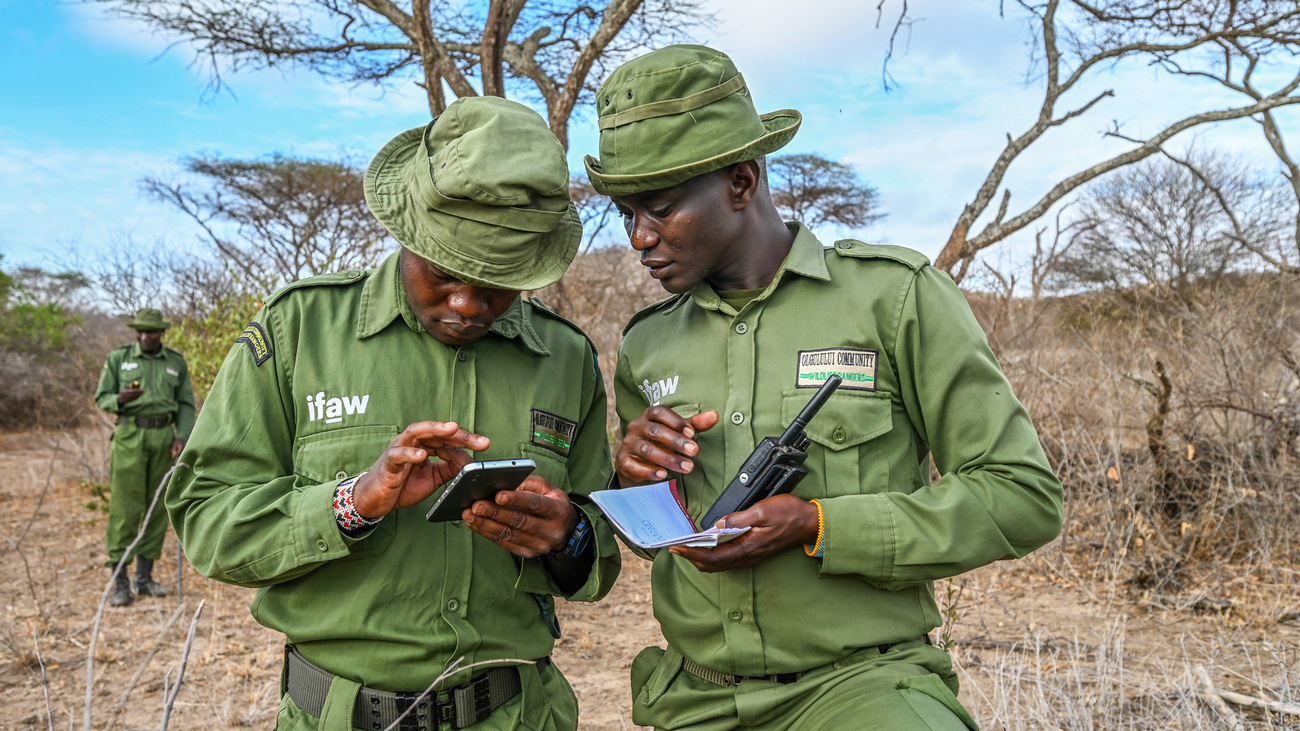Ranger dangers: The perils facing wildlife protectors on the frontline
Ranger dangers: The perils facing wildlife protectors on the frontline

In southern Kenya, Amboseli National Park is a spectacular landscape teeming with over 400 species of birdlife and big game like elephants, lions, and giraffes. Lilac-breasted rollers and starlings paint the sky with vibrant hues of color. Tourists flock here from around the world, drawn to the park’s natural wonders.
But Amboseli’s beauty conceals a darker side that confronts the unsung heroes who dedicate their lives to protecting this vital landscape.
On paper, the job of a wildlife ranger seems idyllic. After all, who wouldn’t want to patrol wide-open vistas brimming with wildlife?
But the reality is that rangers face sophisticated poaching syndicates and wildlife trafficking networks, harsh environments, occasional tension with local communities, and animals that could misjudge them as a threat.
In an IUCN survey of rangers across the world, 88.6% of those in Africa said they had faced a life-threatening situation at work. Over 66% of African rangers had been attacked by poachers, and 82% had had a dangerous encounter with wildlife.
Lions, poachers, and militias
The job can even be deadly. According to the Game Rangers Association of Africa, 95 rangers were killed in the line of duty between June 2021 and July 2022 alone. The association announced: ‘At least 565 African rangers have been killed in action since 2011. 295 of these rangers have been murdered by militia groups, terrorists and bandits in coordinated attacks or by poachers whilst protecting our wildlife and wild places.’
These risks and more are in Amboseli rangers’ minds as they prepare for their day at the recently opened David Rio ranger base in the Illaingarunyoni community conservancy. It’s still pitch dark at 5:45 a.m., but six energetic rangers are already up, chanting while polishing their boots. They check their uniforms and gear, ensuring their GPS devices, torches, mobile phones, and radio receivers are all in working order.
‘We are embarking on our morning foot patrol. It should take us about six hours,’ says Emmanuel Leshinka, the unit leader.
The rangers move between thickets of bushes with ease, weaving themselves through the thorny shrubs in unison.
‘You must use all your senses to observe, listen, and smell what’s happening around you. Remember, you are in the wild,’ warns Emmanuel.
The rangers stop and mull over some markings on the ground. Ranger Lenanu Kuresoi takes notes and GPS coordinates of the sighting. ‘That’s a cheetah footprint from two days ago, and that’s a porcupine from this morning,’ he says.
As they vigilantly walk through the arid area, rangers are tasked with a wide array of activities beyond wildlife monitoring. ‘During patrols, we remove snares, report injured animals to Kenya Wildlife Services vet teams and—if we see any footprints of poachers—we report and track them,’ says team member Saitoti Lengesia.
‘The local community wear shoes made from old car tires, so we know their footprints. If we see a track far from any road that belongs neither to the local herdsmen nor a ranger, it raises a red flag,’ he explains.

The importance of community ties
Saitoti is a wealth of knowledge about the relationship the Maasai community has with different plants. He educates the younger rangers about different tree species and their medicinal properties.
‘When the Maasai experience back pains or any inflammation, we get a small part of the root of this tree and boil it.’ He uses his stick to graze off a small part of the yellow root to taste it.
The local community’s relationship with nature can, however, also be tenuous, as Saitoti points out. ‘When lions kill cows, it’s always a difficult time for us. Emotions are high. Cooling people down after these incidents requires an experienced ranger with a calm demeanor to control the situation and ensure people do not retaliate.
‘It’s never easy because it affects human livelihoods. Even I have lost my livestock to lions, and I know their pain.’
Rangers from the local community play a critical role in mending that relationship between people and wildlife, coaxing everyone to understand that wildlife is not only part of their heritage but also has the potential to provide them with sustainable livelihoods.
Unpredictable wildlife
As they patrol, fresh lion tracks reveal a lioness and her two cubs in the vicinity. Saitoti cautions everyone to stay vigilant because the big cats may be close.
For two hours, the rangers sift tirelessly through bushveld and eventually get to an impenetrable section of vegetation the size of a tennis court. After surveilling the area, Saitoti concludes that the lioness is hiding in the thicket. For safety, he summons a patrol vehicle. His instincts are spot on—the lioness is about a hundred meters away.
The long trek back to the David Rio ranger base in the scorching afternoon sun leaves the rangers tired and dehydrated. The first thing Ranger Leonard Lekinyai does is pour some water in the trough for the birds. A pair of white bellied turacos announce their arrival with a distinct call before quietly quenching their thirst.
Investing in ranger wellbeing
IFAW prioritizes ranger welfare in Amboseli by providing housing and training in skills such as crime-scene management.
We also created an all-female ranger team—Team Lioness—and built family-friendly housing for them to ensure that rangers better reflect the communities they work with.
By investing in ranger welfare, we are helping create a world where both wild animals and people can peacefully co-exist, and giving endangered wildlife Room to Roam.
Related content
every problem has a solution, every solution needs support.
The problems we face are urgent, complicated, and resistant to change. Real solutions demand creativity, hard work, and involvement from people like you.